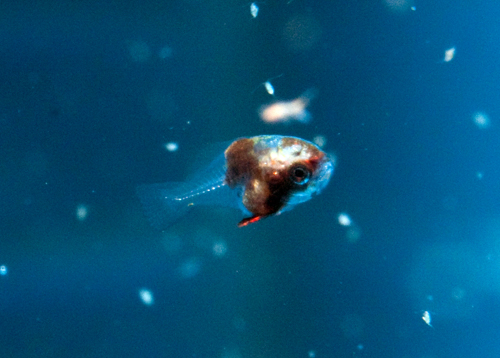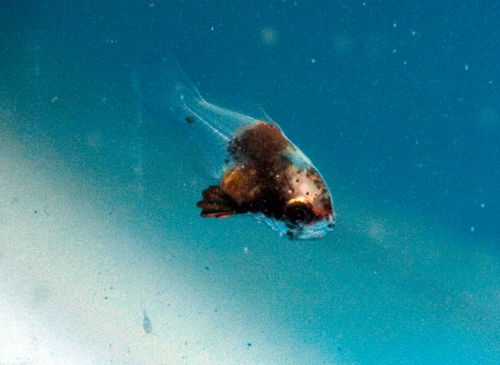
For me, the most exciting part of collecting pelagic eggs and larvae from a large community tank like the 20,000-gallon reef tank at the Long Island Aquarium, is watching the larvae grow and trying to figure out what they are before they reach settlement. Recently we got a great haul of eggs that hatched into some very interesting larvae. As we watched them grow – unusually fast, our excitement grew proportionately. Their relatively deep bodies and large, heavily pigmented pelvic fins really set them apart from the rest of the larvae in the tank. I could tell by their morphology that they weren’t angelfishes or tangs, but there are so many species from so many families in that tank, that that didn’t help to narrow it down much. They reminded me of damselfish larvae, but I knew that was unlikely because these larvae came from pelagic eggs and as far as I know, all damselfishes are benthic spawners.

Well, luckily we didn’t have to wait too long. After a couple of more weeks, these things were overwhelming the 250-gallon rearing tank and had outcompeted all of the other species for available food. I’m not going to pretend I wasn’t disappointed when I finally figured out what they were, but of all the species in this tank – one of the most impressive reef tanks in the world…did it have to be the monos (Monodactylus argenteus)?
Really – who puts monos in a reef tank.










Uggghhhh I hate those things! I’m sure disappointed is an understatement.
If you care at all about the future of aquaculture, write to Joe Yaiullo and ask him to get the monos out of his reef tank.
I’ll just come over with my scuba gear and remove them if you want. Small shaped charges are ok or should I bring the spear gun?